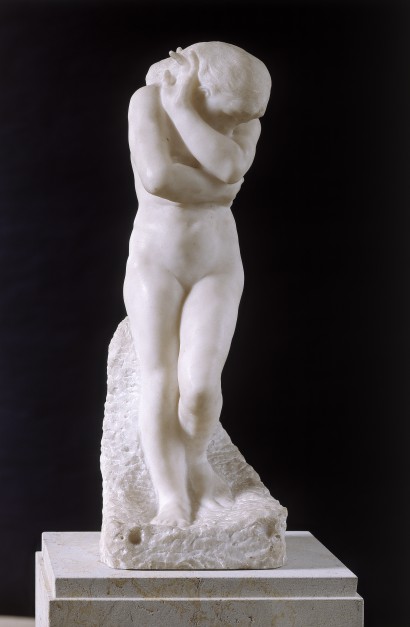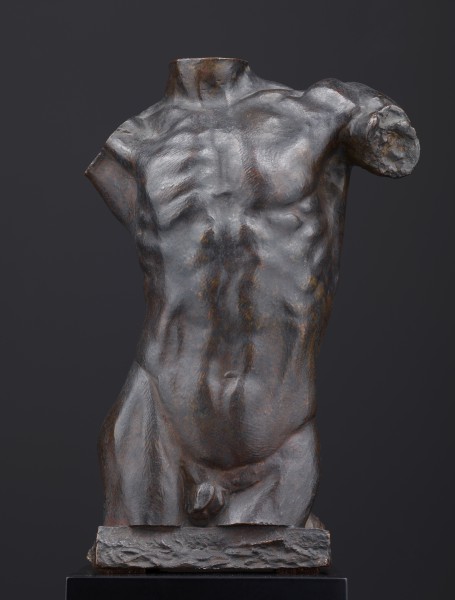

Sculptures made by Auguste Rodin, an eminent French artist and forerunner of modern sculpture, will be presented at the Palace on the Isle from 15 July to 15 November 2022. The works come from the Dresden State Art Collections (Staatliche Kunstsammlungen Dresden).
The exhibition will be open on Tuesday, Wednesday and Sunday from 10.00 to 16.00 and on Thursday, Friday and Saturday from 10.00 to 18.00.
Auguste Rodin’s style
Auguste Rodin’s (1840–1917) work heralded the decline of the academic definition of art and offered new development opportunities to European sculpture.
The exhibition at the Royal Łazienki Museum sheds light on the philosophy behind the work of the French artist and his attitude towards art. While academic sculptors valued the idealization of the figures they depicted, Rodin felt that art was too far removed from real life and the challenges of the new era. For the purposes of sculpture, he thus adopted the formal and stylistic principles of Impressionism, and his work was an announcement of modernism.
The Impressionism, as we know it, is most often referred to in relation to painting. Rodin’s relationship to this art movement is therefore not so straightforward and obvious from the historical point of view. However, his works embody in their own way the essence of Impressionism with its basic principles: movement, spontaneity and light.
Three of Rodin’s works from the Dresden State Art Collections are on display in the Łazienki Museum: "Jean d’Aire", "Eva" and the small "Male Torso". These sculptures provide insight into aspects of his work, such as material, movement and emotional states of man, which were of great importance to the artist. He reduced the elements of his work to those which form the essence of things. He deliberately left parts of a block of stone unfinished to lend suspense to his sculptures and give the audience room for imagination. Rodin shared his passion for the non-finito technique with Michelangelo, who had created his works more than three centuries earlier. Complex experiments and a combination of tradition and innovation made of the French sculptor one of the most technologically advanced artists.
The history of Auguste Rodin’s sculptures
"Eva" (ca. 1881, marble), Rodin’s largest female figure, was designed for the unfinished monumental "Gate of Hell", a symbolic vision inspired by Dante’s "Divine Comedy". The pose of the ashamed naked woman reminds of the "Expulsion from Paradise" painted by Michelangelo on the vault of the Sistine Chapel.
While working on the sculpture, Rodin noticed changes occurring in the model’s body. By the end of the session, it turned out she was pregnant. This could explain, among other things, the unfinished surface of some areas, especially of the abdomen. The absence of elevation of “Eve” compels the viewer to share the space with the figure and emphasizes the woman’s guilt, which can be interpreted as the universality of her sin.
"Jean d’Aire" (1884/86, bronze). In 1884, Rodin was commissioned by the town of Calais to create a memorial to six noble townsmen who gave proof of profound patriotism during the Hundred Years’ War (1337–1453). When the town was threatened by destruction, a group of townsmen offered themselves as hostages. The townsmen were to walk out of the town’s walls barefoot, wearing a shirt, with a noose around their neck and holding the keys to the town. This is how "Jean d’Aire" is depicted: exhausted by famine during the siege and accepting his fate almost stoically. However, his intense look reveals paralysis and fear experience internally. There is no idealization in this representation; this is an ordinary man at the moment of a personal confrontation with death.
This work raised controversy because it did not meet the classic demands of public sculpture. It does not represent heroes in glory and fame. For Rodin, however, it was a heroic monument, displaying heroism of self-sacrifice.
Small "Male Torso" (80s, XIX century, bronze). When Rodin’s long-time secretary Rainer Maria Rilke entered the French master’s atelier for the first time, he was astonished by the multitude of carved fragments of human body of various sizes. At first glance, almost nothing was a finite whole, but the closer he looked, the more he began to realise that these sculptures would be less complete if they were a whole.Rodin’s large-scale works featuring fragments of the human body were first shown in 1889 at a joint exhibition with Claude Monet at the Galerie Georges Petit in Paris. The great influence of Michelangelo can be seen in Rodin’s philosophy. In 1911, the artist explained in a conversation with Paul Gsell that: "Michelangelo said himself that only those statues were good which could be rolled from the top of a mountain without breaking; and in his opinion all that was broken off in such a fall was superfluous".
